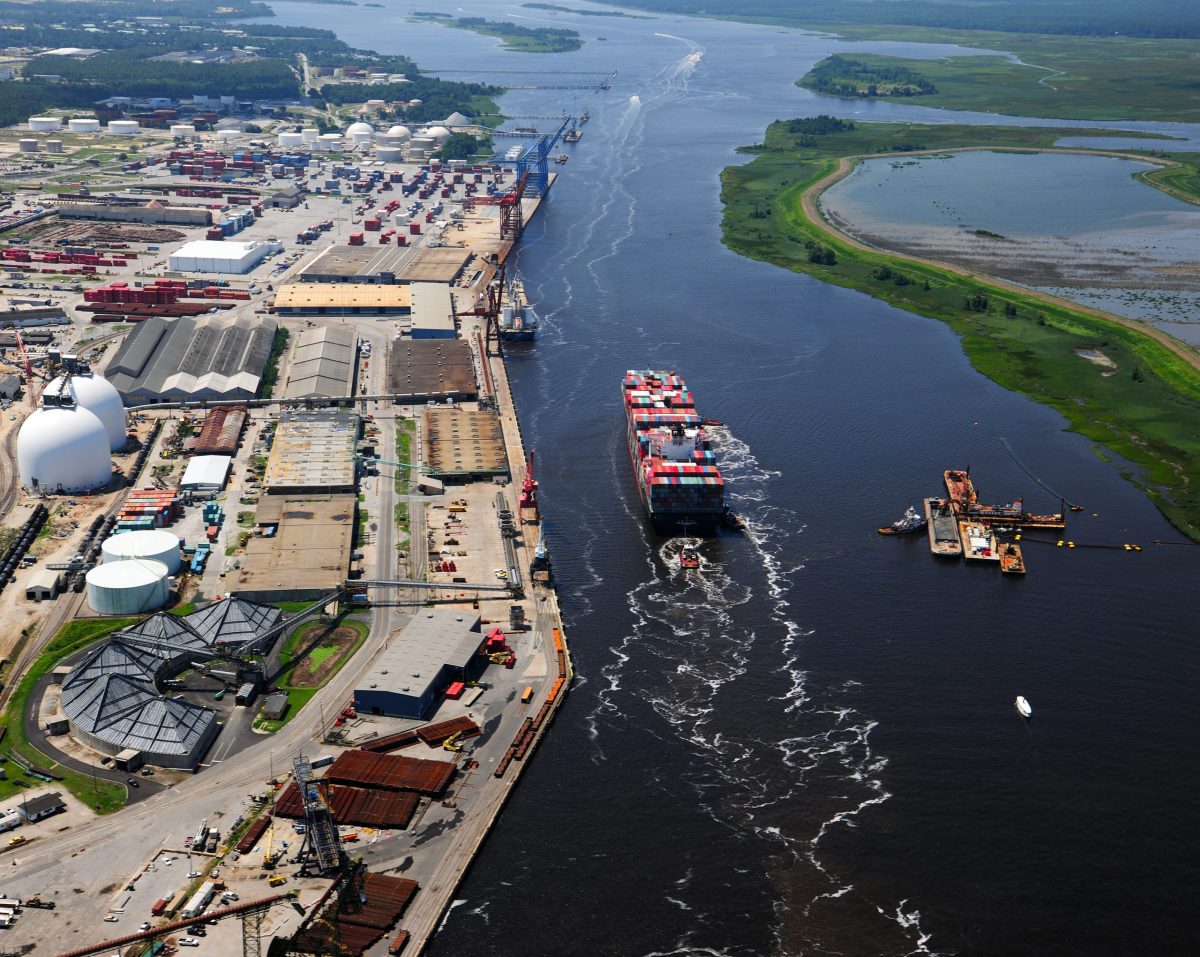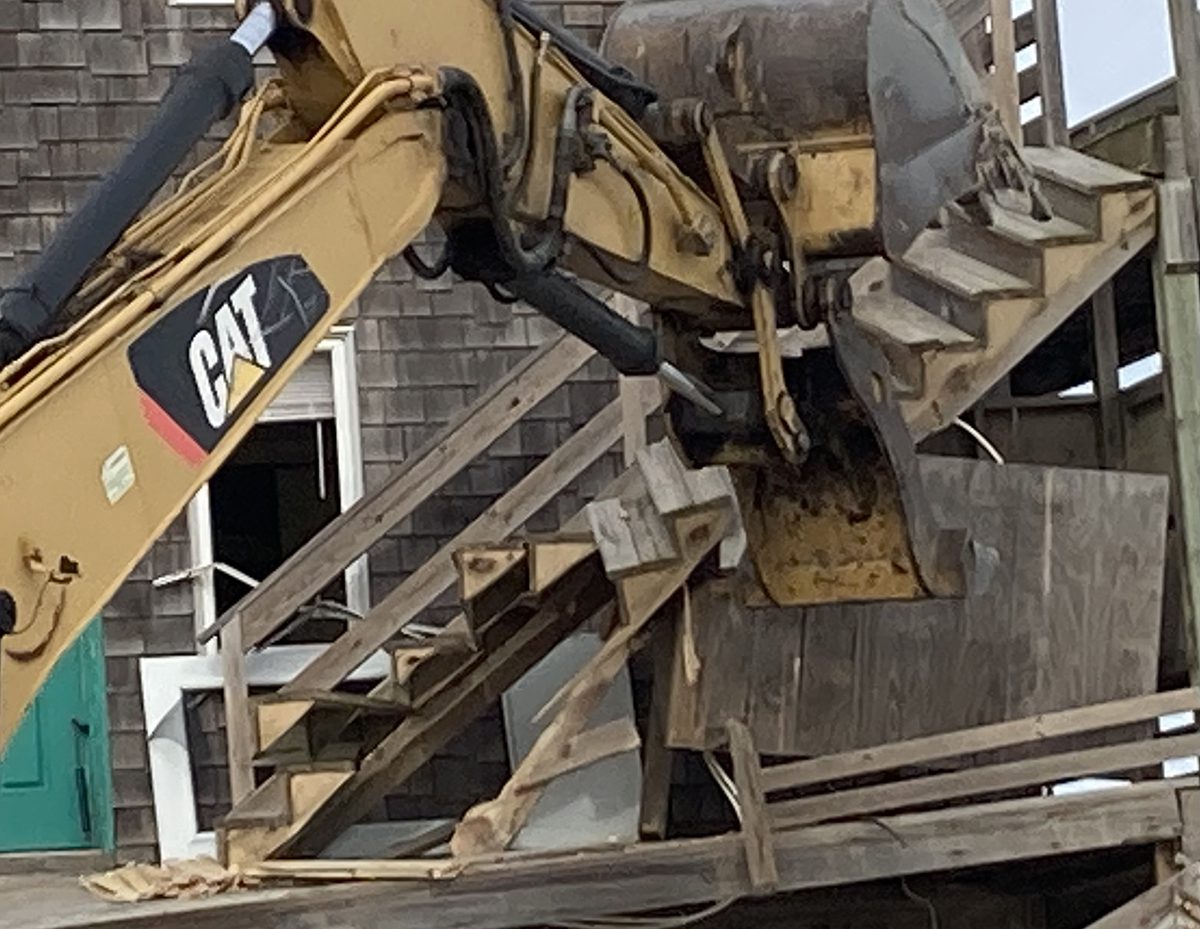
RODANTHE — Two excavators, some thick steel cables and seven determined men did Wednesday afternoon what the Atlantic Ocean was aiming to do: destroy a once-handsome house sitting dangerously close to the swirling surf.
“When we got here this morning, the tide was past the front of the house,” Mike Dunn, owner of W.M. Dunn Construction of Powells Point, told a small group of media at the site, where workers on the beach behind him were preparing the house at 23292 East Beacon Drive for its imminent demise.
Supporter Spotlight
After the larger excavator gingerly began nipping at the stairs, its operator soon began pulling at the planking under the house, followed by its monster-like chomps of the upper decks.
Meanwhile, the smaller excavator was hooked up to a steel line that encircled the house. Most of the crew, who were wielding various sizes of saws, started cutting into the crossbeams under the house with the intent of weakening the structure, while Dunn kept a close eye.
The destruction of a house when done by careful professionals is a compelling sight and it went quickly. Once the house’s support structure was sufficiently compromised by the cuts, the signal was given to the smaller excavator operator to start pulling away from the ocean. After a tentative sway of resistance, the house fell flat on the ground. At that, the larger excavator started pounding at the exterior, exposing the structure’s guts. It would be crushed and splintered, and removed within hours, while National Park Service personnel stood by, ready to scoop up any stray debris on the beach.
In recent years, Dunn had been hired to remove scattered debris from some houses that had collapsed farther south on Rodanthe beaches. But he said it’s a lot easier — and rewarding — to demolish a house before it falls onto the beach.
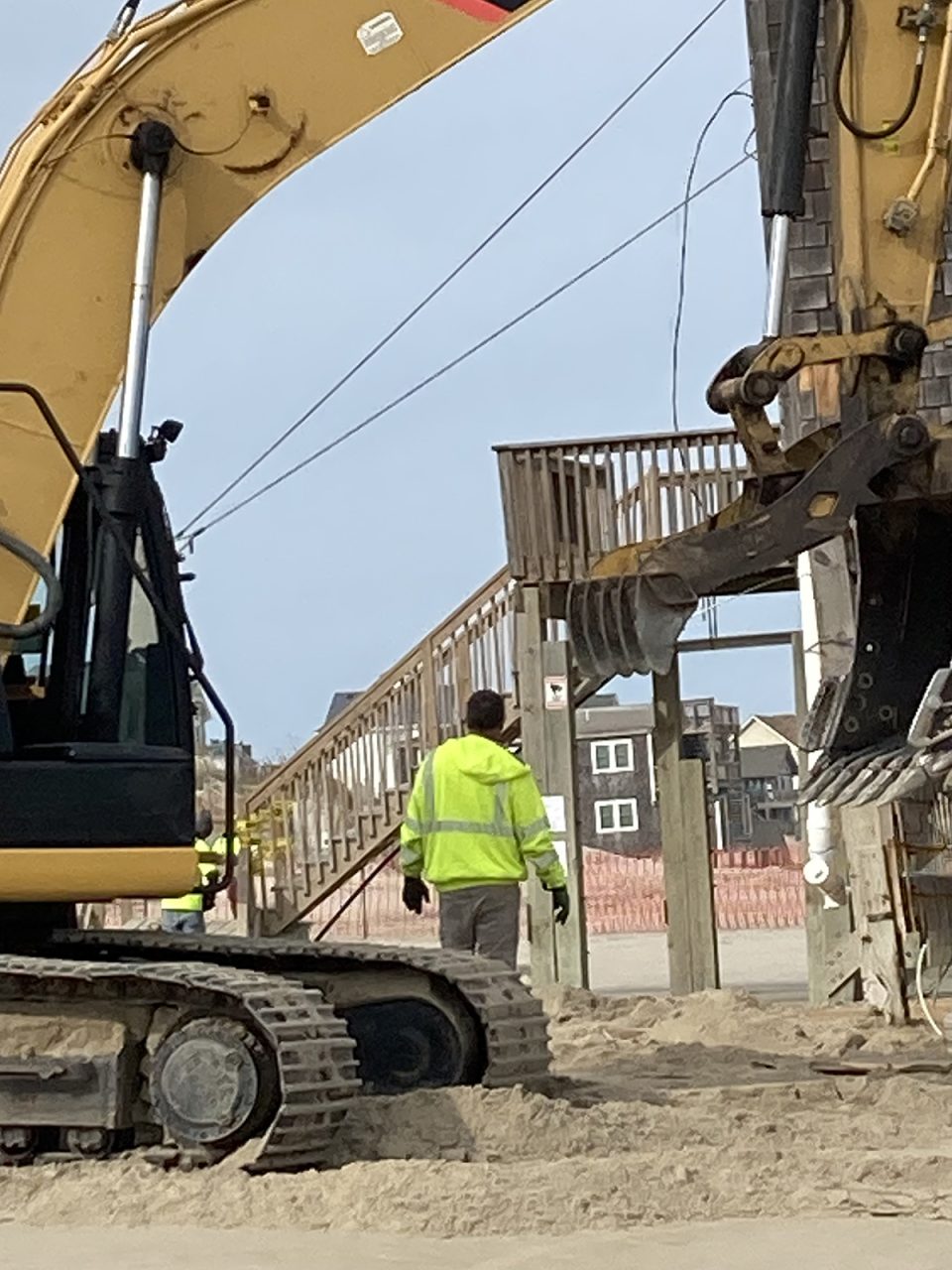
“We enjoy it, because it’s a pretty high-profile project,” Dunn said.
Supporter Spotlight
Four houses have fallen on the Cape Hatteras National Seashore since February 2022, and numerous others on the beach remain threatened.
In a pilot program that made it possible for the National Park Service to buy the two houses, about $700,000 had been provided by the Land and Water Conservation Fund, which uses no tax dollars and is instead funded by income from oil and gas leases.
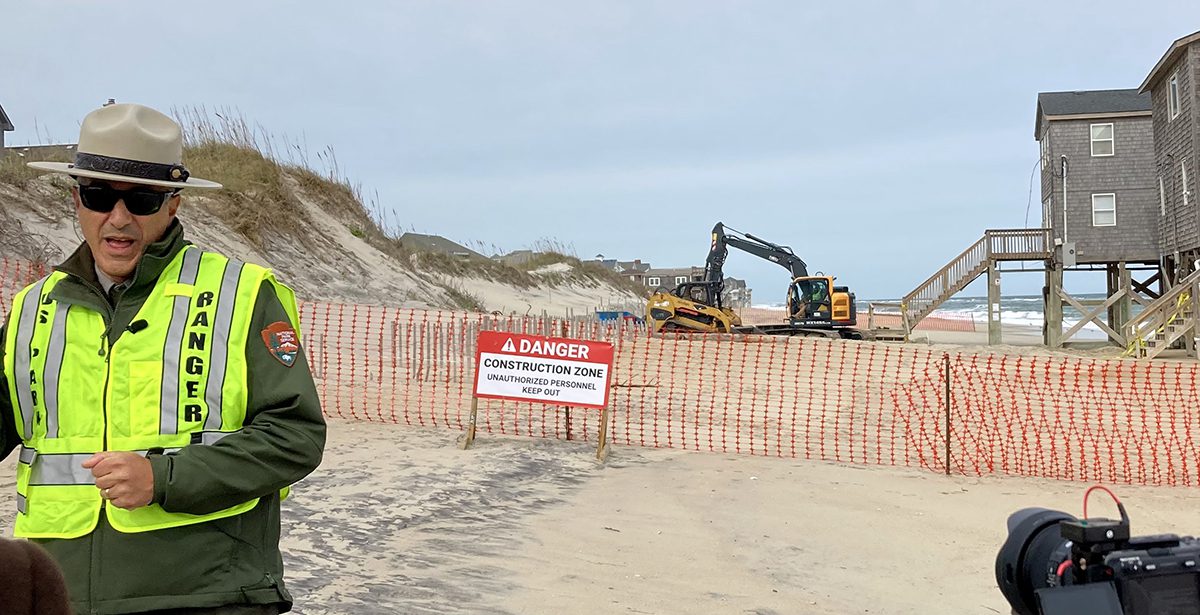
The valuation of the houses was done by specialists at the U.S. Department of Interior, Cape Hatteras National Seashore Superintendent Dave Hallac told journalists.
“The fair market value was determined by a government appraiser,” he said.
The 30-day contract to demolish the two houses cost about $72,000, including removal of septic tanks and the debris, Hallac said. That cost is not covered by the grant.
Dunn said that he expects to remove five or six truckloads of debris from each house after they’re demolished. He added that the second house will be done when the tide and weather conditions allow. Pilings and numerous septic tanks will also be removed.
Although some of the wood may have still been reuseable, Dunn said it wouldn’t be practical to try to save it when you’re racing against high tide.
“You could salvage some of this if it wasn’t on the ocean, but this is a speed process,” he said.
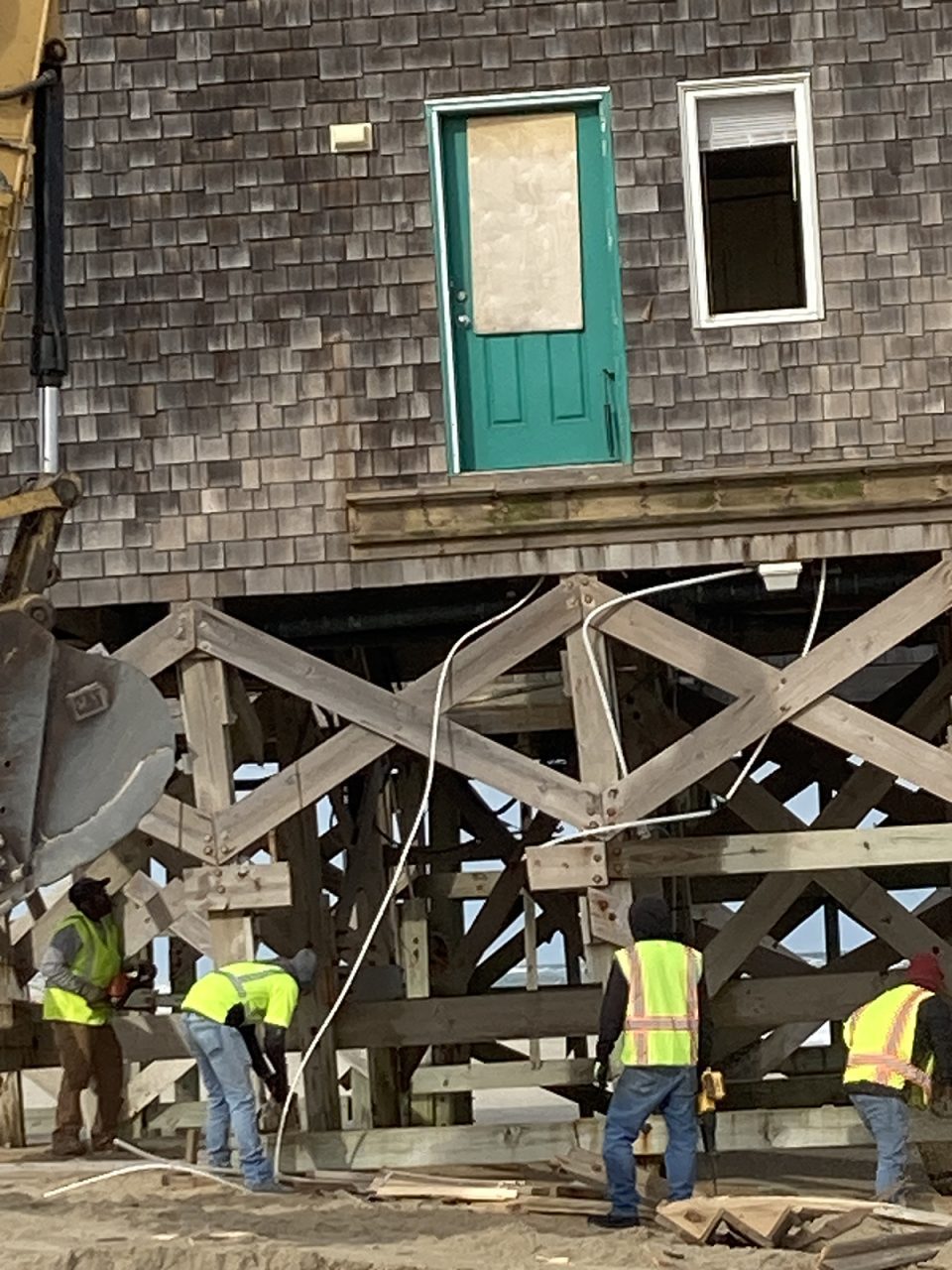
Once the houses are gone, and the beaches are cleaned up, the land will be returned to public use, Hallac said. Installation of a bike rack is under consideration, he added, but there won’t be any parking provided.
Meanwhile, the park service is continuing to evaluate whether the pilot program can be scaled up to allow additional removals of houses on the national seashore.
Until now, it has been difficult for property owners to afford costs of relocating or demolishing their threatened homes on the beach. Some owners said they had no choice but to wait for the houses to collapse before they could collect from their flood insurance policy. Currently, government laws and regulations are limited in requiring owners to take proactive action.
But Hallac said that Dunn’s work showed the sense in taking a house down in a controlled manner before the ocean destroys it and scatters the debris for miles.
“In this case,” Hallac said, “the collapse is on his terms.”





